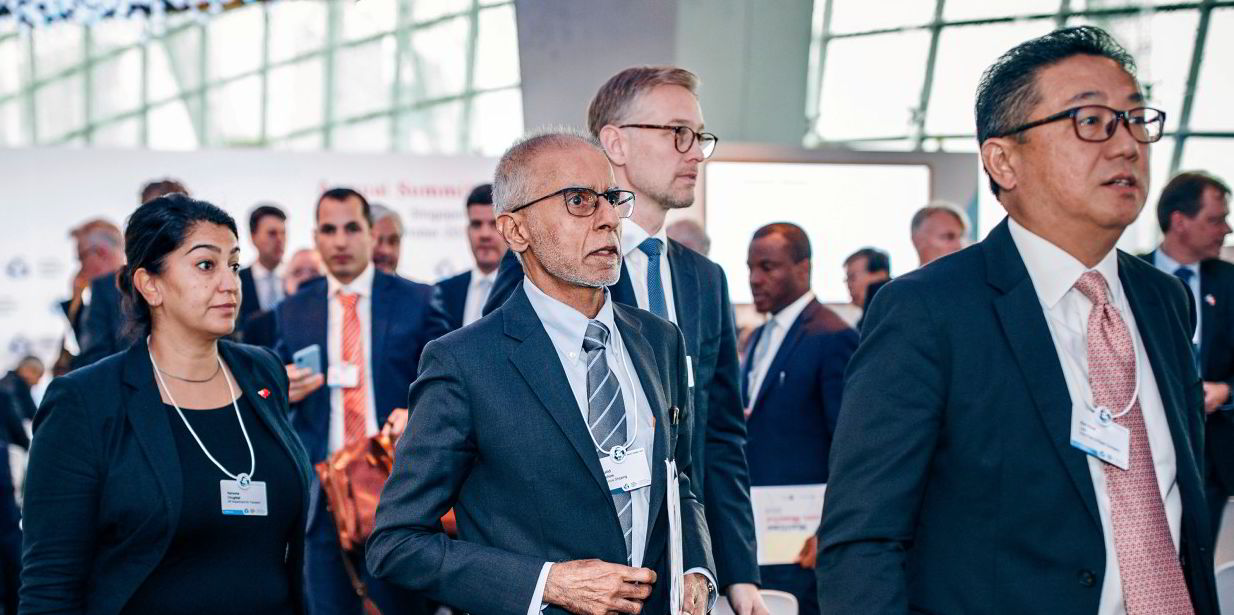Shipping stakeholders have expressed disappointment over an International Maritime Organization agreement laying out measures to cut greenhouse gas up to the end of 2026.
But maritime industry players told TradeWinds that the decision allows the debate to shift to more ambitious targets after 2026 and to other pieces of the CO2 reduction puzzle, such as growing calls for a levy on carbon.
As TradeWinds reported on Tuesday, the IMO's Marine Environment Protection Committee (MEPC) has reached an agreement that will use a mechanism to cut the carbon intensity of existing ships by 2% each year from 2023 to 2026.
The Carbon Intensity Indicator (CII) deal, which had yet to be finalised as the MEPC meeting continued until yesterday, would first seek a 1% annual improvement in carbon intensity to the end of 2022.
"What came out today was very disappointing," Torvald Klaveness chief executive Lasse Kristoffersen said on Tuesday.
"It is a reminder that the IMO is not in a position to implement the changes that are needed. The IMO's ambition for carbon emissions reductions is already outdated, and the decision today does not even reach the level of the IMO's outdated ambition."
Right incentives?
Engebret Dahm, chief executive of the Norwegian shipowner's Oslo-listed Klaveness Combination Carriers spin-off, said the IMO's move actually decreases incentives for action by shipping companies to cut their carbon output because the CII does not take into account the quantity of cargo carried by the vessels or their ballast distance.
But Sveinung Stohle, chief executive of Hoegh LNG, urged shipowners to get behind the IMO's move.
After all, he noted, the IMO is a consensus-driven organisation that can only move forward if it makes compromises.
"Those who are very ambitious on behalf of the environment like us have higher targets, and this decision doesn't hinder companies from doing more than what is required," said Stohle, whose company owns a fleet of LNG vessels.
Lars Pedersen, deputy general secretary of shipowners organisation Bimco, pointed out that the future review of the CII after 2026 allows for more ambitious targets in the future.
Possibly beneficial
"The fact that the required improvements to the CII are less ambitious than some would have wished may prove beneficial, considering the uncertainty on how the requirement can be implemented in the real commercial world of shipping," he said.
Maria Skipper Schwenn, executive director of Danish Shipping, agreed that leaving what happens between 2027 and 2030 undecided is better.
"With the target of a carbon-neutral fleet by 2050, we of course had hoped for a more robust outcome," she said. "However, these incredibly technical as well as political-sensitive negotiations took place under the most difficult circumstances imaginable."
The IMO's MEPC meeting comes roughly a month before officials in the European Union are scheduled to lay out the rules for shipping's inclusion in the EU Emissions Trading System, starting in 2022.
The agreement on the carbon intensity measures also came over the urging of the US and EU delegations, which sought more ambitious targets.
Richard Fulford-Smith, managing partner and founder of shipbroker Affinity (Shipping), said: “The freshly agreed 2% annual carbon-intensity reduction will only add to the US and EU’s disappointment. This new intensity target would mean that shipping’s absolute emissions will continue to increase in this next decade.”

Khalid Hashim, chief executive of bulker owner Precious Shipping, said that while the latest move by the IMO is weak, it is better than no move at all.
He noted that, in the past, unilateral action by countries, such as the US rules on ballast water, has led the world to adopt higher criteria.
"That is what I meant when I said that this is such a time when the IMO deserves to be pushed and/or prodded into action to ‘make a real difference’," he said.
Hashim said adopting market-based mechanisms that could boost the cost of heavy fuel oil to the levels of, for example, ammonia would make a real difference.
John Bassadone, chief executive of marine fuels company Peninsula, said it is always good to implement strong targets to ensure companies are not complacent.
He pointed to the IMO 2020 sulphur cap as proof that the maritime sector can handle it, even though some expressed fears of disaster before implementation.
"Yes, there were certain challenges, but it's been delivered," he said.







